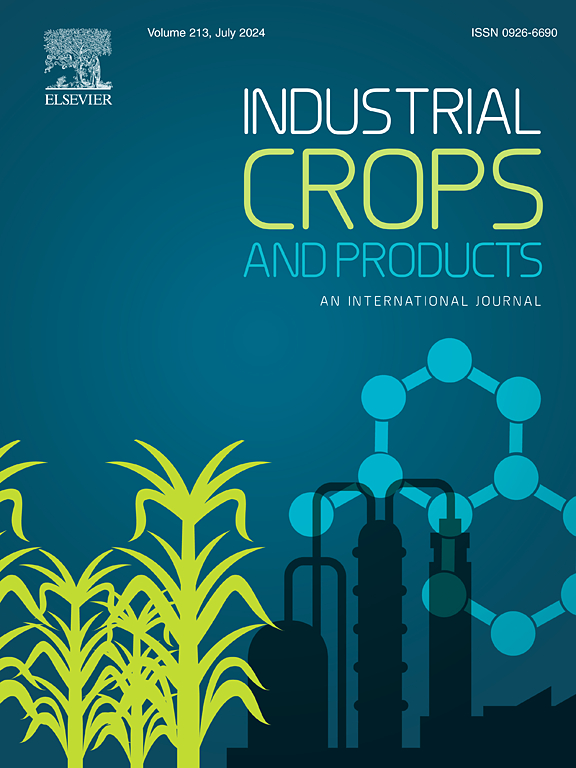用于个人被动冷却的纳米结构棉织物,可增强热传导并节约能源
IF 5.6
1区 农林科学
Q1 AGRICULTURAL ENGINEERING
引用次数: 0
摘要
具有被动冷却功能的纺织品为优化个人热调节提供了有效途径。然而,如何在单一织物中同时实现被动降温、耐用性和舒适性是一项重大挑战。本文提出了一种巧妙的棉织物,可通过简单的浸干技术制成。羧基化纤维素纳米晶体被接枝到纤维表面,然后与羟基化氮化硼纳米片共价连接,形成纳米结构涂层。与原始棉织物相比,这种织物的导热率显著提高了 69%,平面内热扩散率提高了 56%,令人印象深刻。这有可能将室内制冷设备的舒适设定温度提高 2.1 °C,从而将制冷能耗降低 22.2%,同时显著增强皮肤的冷却效果。在阳光直射下,纳米结构织物能使皮肤温度比环境温度低 1.21 °C,防止皮肤温度过度升高 8.2 °C。此外,纳米结构织物还能保持与原棉织物相当的舒适度和耐磨性。这项研究为被动冷却纺织品的开发提供了一种创新战略。本文章由计算机程序翻译,如有差异,请以英文原文为准。

Nanostructured cotton fabrics for personal passive cooling with enhanced thermal conduction and energy saving
Textiles with passive cooling capabilities offer an efficient way to optimize personal thermal regulation. However, the simultaneous achievement of passive cooling, durability, and comfort in a single fabric poses a significant challenge. Herein, an ingenious cotton fabric that can be fabricated through a facile dip-dry technique is proposed. Carboxylated cellulose nanocrystals are grafted onto the fiber surfaces, and then covalently linked with hydroxylated boron nitride nanosheets to form a nanostructured coating. The resulting fabric demonstrates a remarkable enhancement of 69 % in its thermal conductivity and an impressive 56 % rise in in-plane thermal diffusivity, when compared to the pristine cotton fabric. This has the potential to raise the comfort setpoint temperature of indoor cooling equipment by 2.1 °C, thereby reducing cooling energy consumption by 22.2 %, while significantly enhancing the perceived cooling effect on the skin. Under the direct sunlight, the nanostructured fabric cools the skin by 1.21 °C below ambient temperature, preventing an excessive increase of 8.2 °C in skin temperature. Moreover, the resulting fabric maintains comparable levels of comfort and wearability as that of the original cotton fabric. This study presents an innovative strategy towards the development of passive cooling textiles.
求助全文
通过发布文献求助,成功后即可免费获取论文全文。
去求助
来源期刊

Industrial Crops and Products
农林科学-农业工程
CiteScore
9.50
自引率
8.50%
发文量
1518
审稿时长
43 days
期刊介绍:
Industrial Crops and Products is an International Journal publishing academic and industrial research on industrial (defined as non-food/non-feed) crops and products. Papers concern both crop-oriented and bio-based materials from crops-oriented research, and should be of interest to an international audience, hypothesis driven, and where comparisons are made statistics performed.
 求助内容:
求助内容: 应助结果提醒方式:
应助结果提醒方式:


